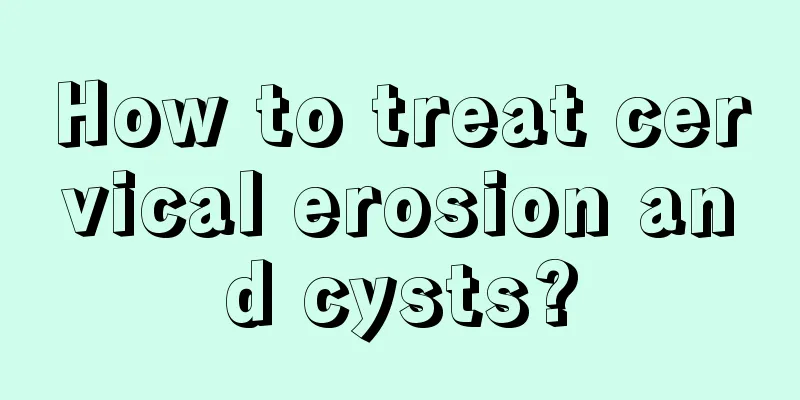How to treat cervical erosion and cysts?

|
Speaking of cervical erosion, female friends should be quite familiar with it. The reason why they suffer from this kind of disease is mostly due to surgical injuries or miscarriage, childbirth and other behaviors. In addition, it can be divided into mild and moderate according to the degree of erosion. Three degrees of severity. Cysts are a type of disease that can be discovered through B-ultrasound. Cysts occur because inflammation blocks the cervical glands in the new epithelial tissue during the healing process. So how should cervical erosion and cysts be treated? The first type: treatment of cervical erosion: Not all cervical erosions require treatment. If there are no clinical symptoms such as increased leucorrhea and the TCT examination is normal, cervical erosion generally does not require treatment. This is because in some physiological conditions, such as during adolescence, pregnancy, or women taking oral contraceptives, the increase in estrogen levels causes the columnar epithelium of the cervical canal to proliferate and migrate outward, resulting in an erosive appearance. This is physiological cervical erosion and does not require treatment. If the clinical symptoms of cervical erosion are obvious and the doctor confirms that treatment is needed, and TCT examination has been performed to rule out cervical cancer, physical therapy is recommended, such as focused ultrasound, laser, cryotherapy, etc., among which focused ultrasound therapy is the least traumatic. The treatment time is within 3-7 days after the menstruation ends. The wound healing time takes 3-4 weeks. For deeper lesions, it takes 6-8 weeks. During this period, there will be bloody or watery vaginal discharge. Attention should be paid to vulvar hygiene, infection prevention, and sexual intercourse should be avoided. Oral medications for cervical erosion are useless. Topical medications can be used for patients with clinical symptoms such as increased leucorrhea. Various Chinese medicine suppositories are similar and have certain clinical efficacy, but they are not as effective as physical therapy. The second method: treatment of cysts. Many patients are found to have cervical cysts during physical examination and B-ultrasound, most of which are multiple cysts. Do they need treatment? The reason for the formation of cervical cysts is that during the process of inflammation repair, the new epithelial tissue blocks the exit of the cervical glands, so that the mucus secreted by the cervical glands cannot be discharged, and small blisters are accumulated. Because cervical tissue is tough, cervical cysts generally do not grow too large, they will not become cancerous, and do not require treatment. |
<<: Blood clots after menstruation
>>: What are the symptoms of cervical erosion
Recommend
How to treat acne on the back? Six tips to give you a smooth back
When fighting acne, many female friends only pay ...
What are the special medicines for cough in pregnant women?
Cold and cough are common symptoms in pregnant wo...
If you don't vomit during pregnancy, you are stupid
Vomiting is the most common reaction during pregn...
Characteristics of women who have had abortions
Some women have had abortions before, but after g...
What rowers eat: Nutritionists tell you
Rowing is a water sport originated in the UK and ...
Nine ways women abuse their breasts
Women's breasts are the most important part o...
What to do if you have back pain during 5 months of pregnancy
Low back pain often occurs in many situations, in...
Is it normal to bleed after having an IUD inserted?
If there is a short-term, light bleeding after th...
What to do if the brown leucorrhea has no odor
Leucorrhea is a normal female secretion, usually ...
What are the symptoms of pregnancy?
There are huge changes in women after pregnancy. ...
Treatment of adult granulosa cell tumor of the ovary
In recent years, the incidence of gynecological d...
World Hemophilia Day | Care for "glass people" and make love not rare!
April 17, 2024 is the 36th "World Hemophilia...
Solution to yellow-green vaginal discharge
Yellow-green leucorrhea is a type of gynecologica...
Milk duct bleeding in late pregnancy
When a pregnant woman is pregnant, her body may d...









